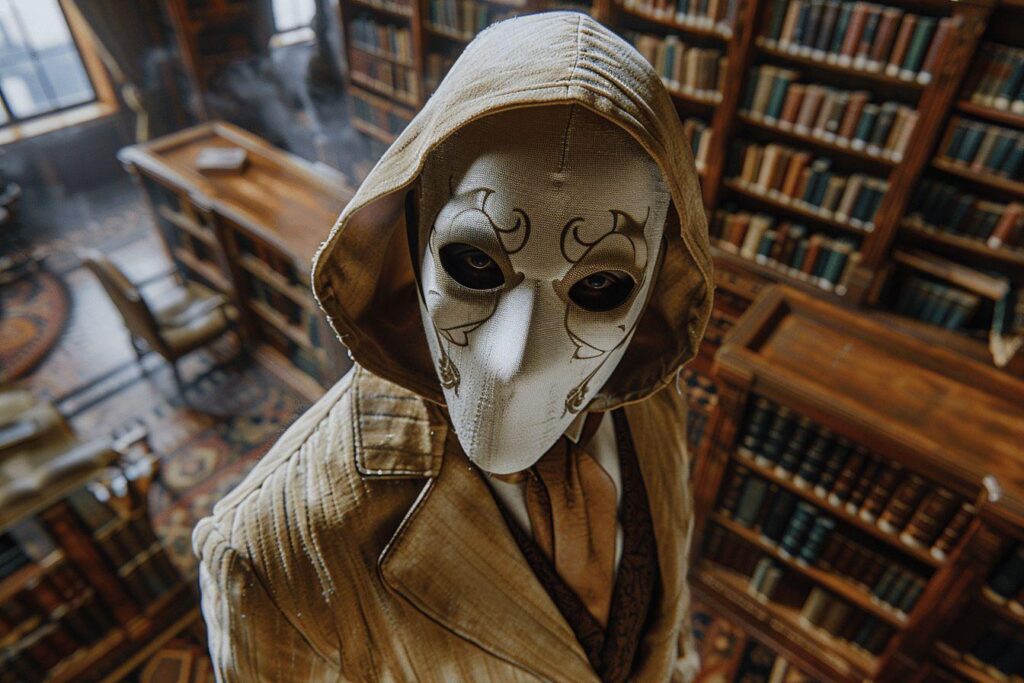The Fantômas series, a veritable literary phenomenon of the early 20th century, continues to interest readers and researchers alike. These detective novels, featuring the eponymous criminal mastermind, have left their mark on the history of popular literature and influenced many fields of art. Let’s delve into the captivating world of the Fantômas books, their history and their cultural impact.
The birth of a literary myth
The Fantômas saga was born in 1911 from the pen of Pierre Souvestre and Marcel Allain. These two prolific authors created a character that quickly became iconic: Fantômas, the elusive criminal. Drawing inspiration from figures such as Rocambole and Arsène Lupin, they infused their hero with a new dimension, combining criminal genius with a mysterious aura.
The first volume, simply entitled “Fantômas”, was published in September 1911 by Arthème Fayard. It was an immediate success, and the series rapidly expanded to 32 volumes in just two years. This breakneck pace was due to an original writing process: the authors dictated their stories using a dictaphone, enabling fast, fluid production.
Fantômas novels are characterized by :
- Unbridled style and twisted plots
- A poetic-fantasy atmosphere
- Chases using the technologies of the time
- An evocation of Belle Époque society
- A vivid portrait of a vanished Paris
All these elements contribute to creating a unique, captivating universe, which immediately appealed to audiences of the time and continues to intrigue modern readers.
The cultural impact of the Fantômas books
Fantômas’ influence extends far beyond the realm of popular literature. The character quickly became a veritable modern myth, spanning the entire 20th century and inspiring numerous artists and cultural movements.
The artistic avant-garde, particularly the Surrealists, seized on the figure of Fantômas. They saw him as the embodiment of absolute freedom and the subversion of social norms. This fascination manifested itself in various fields:
| The arts | Impact of Fantômas |
|---|---|
| Cinema | Louis Feuillade’s landmark adaptations from 1913 onwards |
| Painting | Depictions of the character by avant-garde artists |
| Literature | Inspiration for many Surrealist writers |
Cinema quickly seized on the character, with Louis Feuillade’s emblematic adaptations from 1913 onwards. These silent films further popularized Fantômas as a recognizable visual icon.
In the 1960s, the character enjoyed a resurgence in popularity thanks to a new series of films starring Louis de Funès and Jean Marais. These lighter, more humorous adaptations introduced a new generation to the world of Fantômas.

Rediscover Fantômas books today
Despite the passage of time, Fantômas books continue to appeal to contemporary readers. Several factors account for this enduring craze:
- The “vintage” aspect appreciated by modern readers
- Rich plots and characters
- The evocation of a bygone but fascinating era
- The mythical dimension of the main character
Today’s readers have several options for rediscovering these works. In the 1980s, Robert Laffont published a complete reissue in three volumes, providing access to the entire series in a convenient format.
It’s important to note that the first volumes of the series are still in their infancy in terms of myth-building. Over the course of the series, the character of Fantômas gains in depth and complexity, offering a fascinating insight into the evolution of a literary hero.
An enchanting subject for study
Beyond the simple pleasure of reading, the Fantômas books have become an object of study in their own right. Numerous researchers and academics have examined this literary phenomenon, analyzing its cultural and sociological impact.
Critical studies of Fantômas cover a wide range of aspects:
- Analysis of Souvestre and Allain’s literary style
- The study of social representations in the novels
- Examination of Fantômas’ influence on the visual arts
- exploring the modern myth embodied by the character
These academic studies provide a better understanding of Fantômas’ importance in twentieth-century cultural history. They highlight how a fictional character can transcend his original medium to become a veritable social phenomenon.
Finally, the Fantômas books occupy a unique place in the history of popular literature. From their dazzling creation at the beginning of the 20th century to their current status as objects of study and fascination, these novels have stood the test of time while retaining their seductive power. Whether you’re a fan of detective novels, a cultural history buff or simply curious, discovering or rediscovering the world of Fantômas promises a rich and captivating reading experience.

